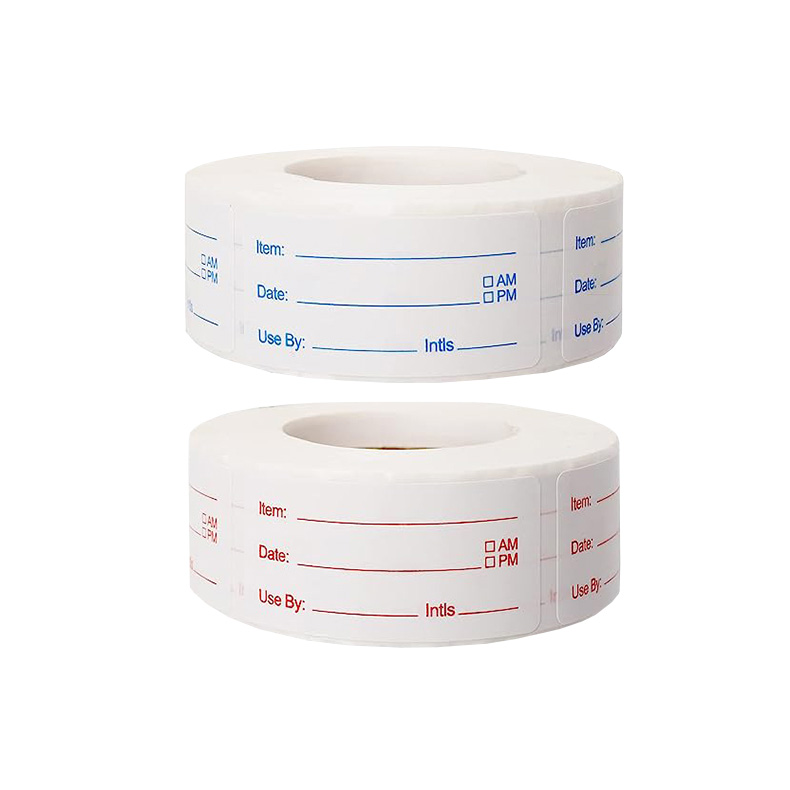White Dissolvable Food Labels offer a convenient and eco-friendly solution for labeling food items in various settings, including commercial kitchens, food processing facilities, and retail establishments. Proper usage of these labels is essential to ensure food safety, compliance, and operational efficiency. This article provides insights into the correct usage of White Dissolvable Food Labels, along with essential considerations such as surface requirements and storage conditions.

1.Surface Requirements:
Before applying White Dissolvable Food Labels, ensure that the surface is clean, dry, and free from any residue. This helps to maximize adhesion and prevent the label from peeling off prematurely. Avoid surfaces with moisture or grease, as they may affect the label's ability to adhere securely.
2.Label Application:
When applying white dissolvable food labels, press firmly to ensure proper adhesion. Smooth out any air bubbles or wrinkles to prevent the label from lifting. Place the label in a visible and easily accessible location on the food packaging to facilitate quick identification and monitoring.
3.Label Content:
Include essential information on the label, such as product name, date of preparation or packaging, expiry date, and any relevant allergen or nutritional information. Ensure that the information is legible and accurately reflects the contents of the package to prevent confusion or misinterpretation.
4.Storage Conditions:
Store white dissolvable food-labeled items in appropriate conditions to maintain label integrity and food quality. Avoid exposing labeled items to extreme temperatures, humidity, or direct sunlight, as these factors can degrade the label's dissolvability and readability. Additionally, store labeled items away from sources of moisture or chemicals that may accelerate label degradation.
5.Dissolvability Testing:
Conduct periodic dissolvability testing to ensure that the labels dissolve effectively in water or other approved solvents. Verify that the labels dissolve completely without leaving any residue or particles that could contaminate food or equipment. If any issues are detected, consider adjusting the label composition or application process accordingly.
6.Compliance with Regulations:
Adhere to relevant regulations and guidelines governing food labeling and safety when using white dissolvable food labels. Familiarize yourself with local, national, and international regulations to ensure compliance with mandatory labeling requirements, including language, format, and content specifications.
7.Training and Education:
Provide training to staff members responsible for labeling food items to ensure consistent and accurate labeling practices. Educate employees on the importance of proper labeling for food safety, traceability, and regulatory compliance. Encourage continuous improvement and feedback to refine labeling processes over time.
8.Label Removal:
Prior to washing or sanitizing food containers or equipment, ensure that all white dissolvable food labels have been removed completely. Residual labels left on surfaces can compromise cleanliness and sanitation efforts. Use appropriate cleaning agents and techniques to remove any remaining adhesive residue if necessary.
9.Monitoring and Auditing:
Establish regular monitoring and auditing procedures to verify compliance with labeling requirements and identify any potential issues or areas for improvement. Conduct periodic inspections of labeled items, storage areas, and labeling equipment to ensure proper functioning and adherence to best practices.
10.Feedback and Adaptation:
Encourage feedback from staff members and stakeholders regarding the usability and effectiveness of white dissolvable food labels. Use this feedback to make necessary adjustments to labeling processes, equipment, or label specifications to optimize performance and address any emerging needs or challenges.
By following these best practices for using white dissolvable food labels, businesses can enhance food safety, regulatory compliance, and operational efficiency in food handling and storage environments. Effective label application, proper storage conditions, compliance with regulations, and ongoing training and monitoring are essential components of a successful labeling program.



